HomeStream
News & more!Escapes
My trip reviewsGallery
My travel photosPlanning
Trip planningGuides
Destination guides
My Escapes  Portugal
Portugal  Another Lovely Trip to Portugal!
Another Lovely Trip to Portugal!  Belém
Belém  Belém Day Trip
Belém Day Trip  Belém Tower
Belém Tower
Belém Tower
The Belém Tower appears on a plethora of brochures and ads about Portugal and Lisbon... I'd say it's the most famous Portuguese building.
A small fortification, referred to by locals as "the fortress", used to guard the entrance to Lisbon through Rio Tejo from the Atlantic Ocean.
Oddly, everything inside is so tiny, I thought it was built by the Smurfs.
The Belém Tower is located on a tiny island, which used to be much further in the water, but land was reclaimed and it's now right near the river bank.
A bit further west, the vast Rio Tejo's mouth meets the Atlantic Ocean...
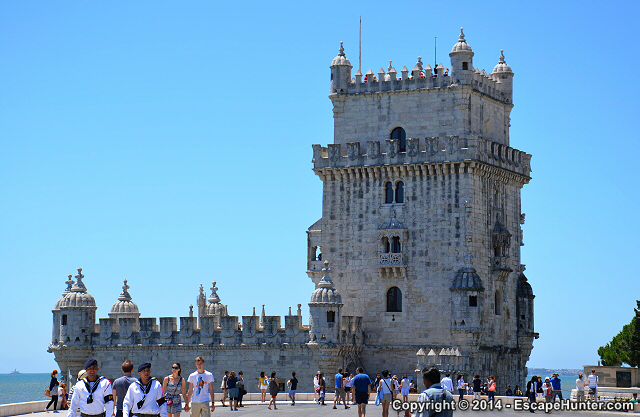
View Photo Gallery for more travel photos
Visitors enter the fort through a wooden bridge (modern), which connects it with the land area.
It cost me 6 EUR to enter the fortress.
This is one of those places where mainstream tourism thrives. A bunch of foreign tourists were roaming everywhere.
No wonder, it's one of Portugal's top attractions, you don't have to do much discovery work to get here...
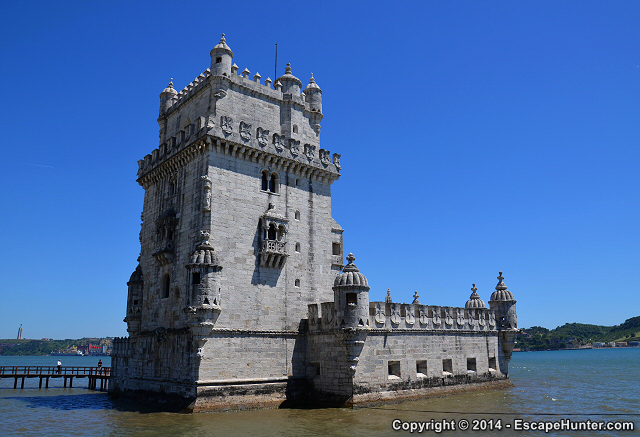
From the other side...
View Photo Gallery for more travel photos
Now, let's find out a about its history...
Its construction began in 1513 and it was finalized by 1519, ordered by King João II.
The style of the building is Portuguese Manueline, which is an in-between style, which followed Late Gothic, but preceding Renaissance.
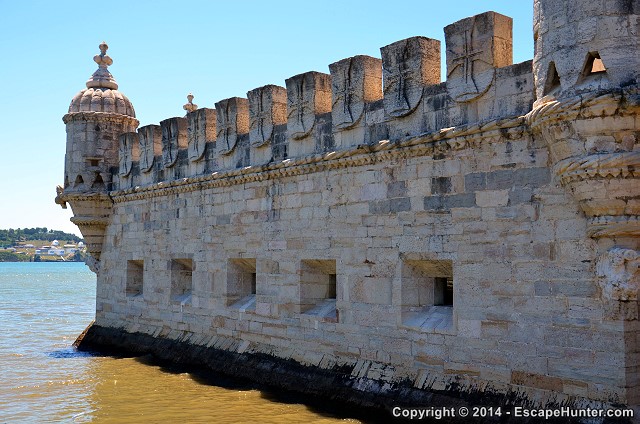
Few fortress walls are made so attractive. Even the enemy would have loved it.
View Photo Gallery for more travel photos
The Portuguese Manueline style incorporates maritime elements and representations, bearing also Spanish and Italian, as well as Flemish influences.
As a matter of fact, the Belém Tower is one of the best representatives of the Portuguese Manueline architecture.
For a fortress, it looks too beautiful. It could have been an aristocratic residence.
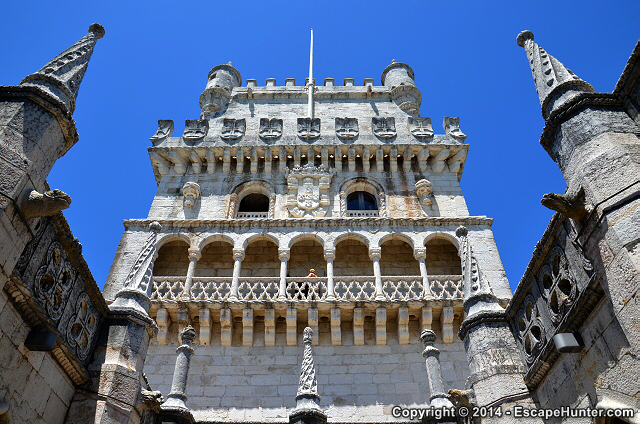
Feels so romantic, only Juliet is missing from the balcony!
View Photo Gallery for more travel photos
As I said earlier, the fort used to be deeper in the water - somewhere around the middle of the river.
This is partly because the river changed its course after the 1755 Lisbon Earthquake. Also, because some land was reclaimed to bring it closer.
I was told that 500 years ago, Rio Tejo's northern bank was in the immediate proximity of the Jerónimos Monastery.
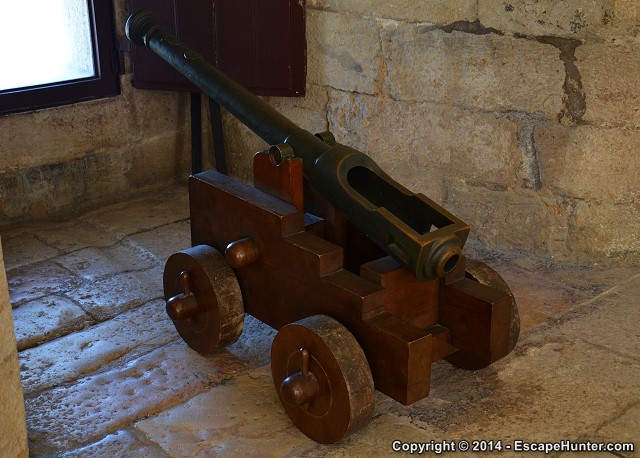
Base floor: one of the many small cannons. So small, you could defend your backyard, but I doubt these were efficient against massive battleships.
View Photo Gallery for more travel photos
The Torre de Belém is also called "São Vicente Castle" - named after the town's patron saint.
One of the strange things about this building is that just about everything in it is small... very small cannons, but plenty of them... tight staircase, narrow doorways and claustrophobic observation cabins.
In fact, visitors had to wait in line for their turn to descend or ascend in the staircase.
An LCD screen showed us when we had green to go up or down. Lethargic...
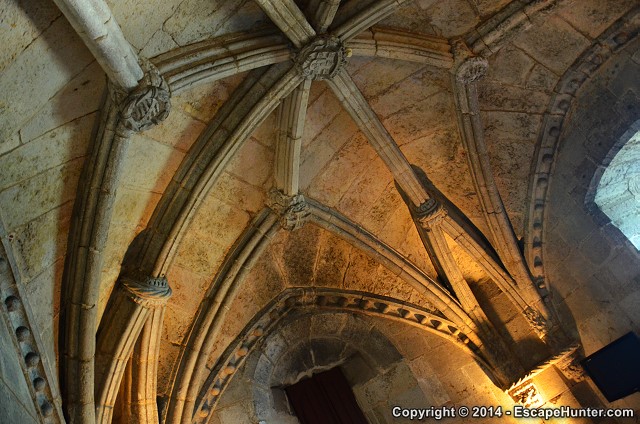
I wonder if there would be any echo if you screamed...
View Photo Gallery for more travel photos
The staircase too was tiny. Even for a grown "modern man". People were a lot smaller 500 years ago.
It felt like the "dwarfs' castle", it just didn't feel normal.
There were many cannons, but they were all very small. No match for a Spanish galleon's bombards or the famous Culverin battleship cannons used by the English warships.
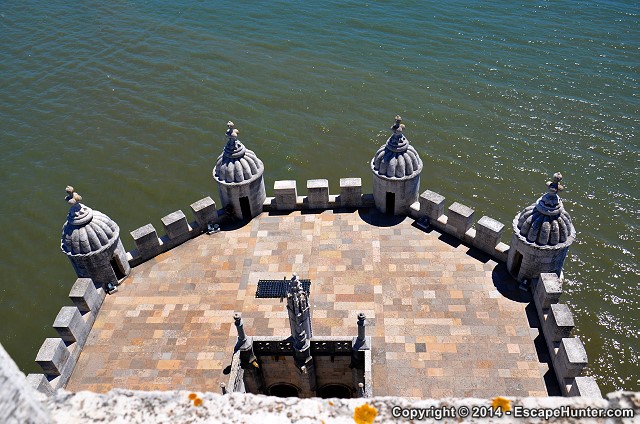
Terrace... felt like aboard a ship of rock...
View Photo Gallery for more travel photos
At most, this could have been a guard tower.
Quite asymmetrical - with a bunch of cannons pointed towards the southern bank of River Tagus, the east and the west, but nothing on the northern bank.
But it wasn't intended to be a major stronghold...
The Torre de Belém was supposed to complement the other fortresses in the area - found at Cascais and Estoril.
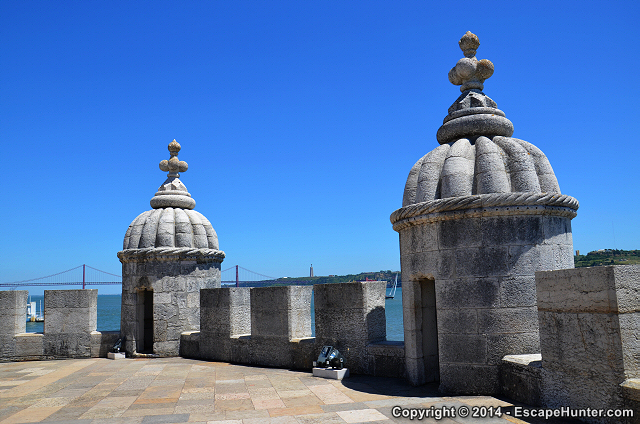
The terrace was ideal for observing the boat traffic and... casually firing a few shots
View Photo Gallery for more travel photos
From the crowded rooftop of the Torre de Belém, I caught a glimpse of another fortification, just a bit further, where the Museu do Combatente is found.
It's a military museum that almost no-one visits. A very short walk away, it's partly covered by trees around it, so mainstream tourists don't even notice it.
I suggest you don't miss out on the Museu do Combatente, just about 5 minutes walking distance away from Torre de Belém.
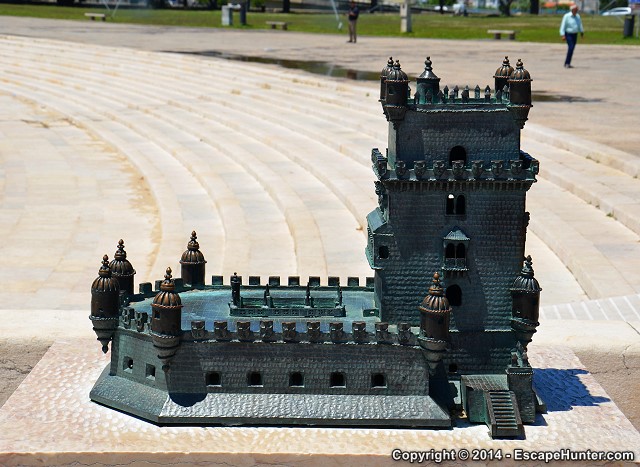
Bronze model for people to touch and rub its key parts shiny!
View Photo Gallery for more travel photos

About the Author:
Escape Hunter, the young solo traveler in his early 30's explores the World driven by curiosity, thirst for adventure, deep passion for beauty, love for freedom and diversity.
With a nuanced, even humorous approach to travel, an obsession for art and design, Escape Hunter prefers to travel slowly, in order to learn and "soak up" the local atmosphere...
Comments

As "Escape Hunter" - the curious incognito traveler with an insatiable drive to explore, I embark on slow and deep travels around
our beautiful World.
Join me and I will show you exciting destinations
"from within", through my
"escape" trips!

Travel Slang Dictionary
Guide to my personal travel slang vocabulary, which seasons my content...






A magnet for the common tourist